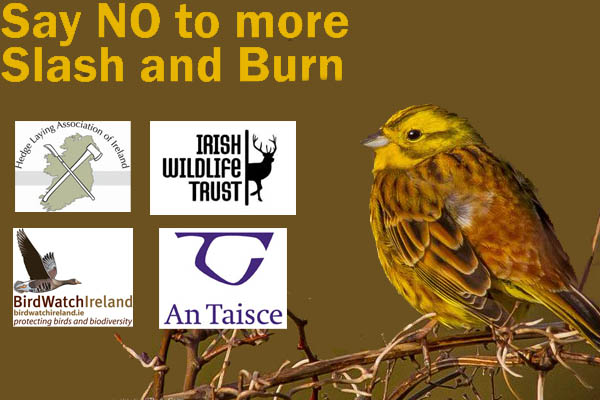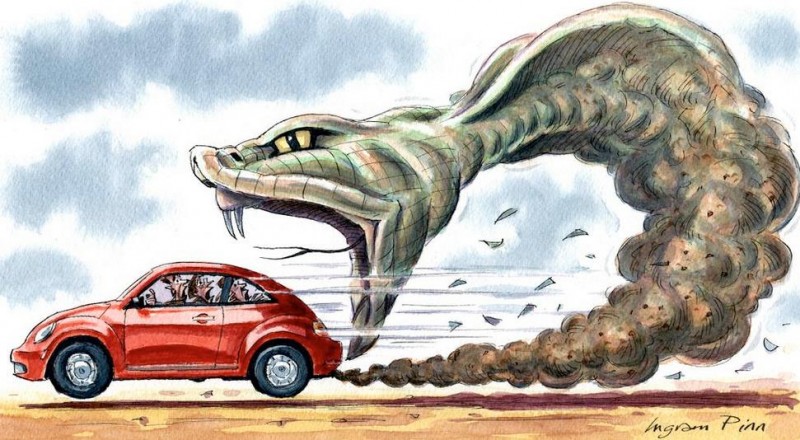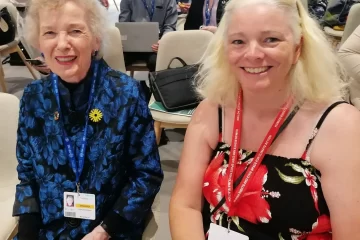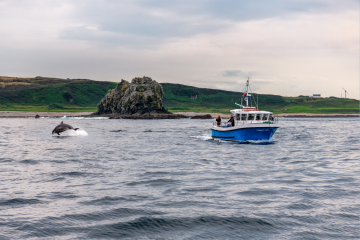Opinion: Ireland’s ecology facing continuing challenges from hedgerow damage

August 23rd, 2017
An unusually dry spring this year resulted in some of the most devastating wildfires in living memory, but Ireland’s ecology is facing other continuing challenges. Current rules under the Wildlife Act allow adequate time for birds to nest, but they’ve been undermined by a government which is showing tacit support for those who break the law.
By trying to relax protection for the simple convenience of farmers, who form an important voting bloc for Fine Gael, Minister Heather Humphreys has put party politics before common sense and scientific advice, meaning endangered species like the late-breeding yellowhammers could go extinct.
The impact of the Minister’s proposal to allow burning and cutting of vegetation during March and August is already apparent, despite the fact that it has been frozen in deadlock due to sustained opposition from within both houses of Government.
The Heritage Bill 2016 is seen by those who wish to protect wildlife as a populist move to extend the cutting and burning season for the convenience of landowners at the expense of nature. Senator David Norris called it “an election gimmick to buy the farmers’ vote”.
Minister Humphreys says the extension is merely being allowed on a pilot basis, but Norris, among others, has disputed this, saying: “We need Irish data so we need a proper pilot study, not a mass implementation of a policy which is unsupported by science.”
To talk to many farmers, the bill is as good as passed. Some were surprised when I pointed out that its fate is still uncertain. Many see it as an autonomy issue. They believe they have the right to manage their own land as they see fit. Indeed many of them view environmentalists as urbanites with no cause to interfere in the day-to-day activities of rural people, a perception the green movement must work to overcome.
One young farmer told me he has been kept busy all summer doing fieldwork for neighbors with the hedge-cutter. He seemed blissfully unaware that he might be doing any harm to wildlife; the thought had not entered his head. This reflects an obvious disconnect between some farmers and their environment.
Have the custodians of the countryside lost touch?
Farming has changed immeasurably over the past few decades and some farmers seem to have lost an innate connection with the natural world that once epitomised rural life. When field work was done by hand, people knew much more about their surroundings. They needed to be in tune because many facets of folklife were dependent on such knowledge.
Hedgerows were valued for their herbs and fruits and farmers could identify the various trees on their land, knowing that all of them had their uses. People understood the interconnectedness of nature and respected the right of wildlife to exist, even if some creatures were not well-liked.
Some people think this notion is too romantic and there is some division here. After all, farming has always simultaneously been a sort of war on nature. From the first settlers who cleared forests for their holdings, those who tried to harness nature knew that the odds were stacked against them. Pests, diseases and freak weather events are only some of the challenges they routinely faced.
Pressure points
Today, there are many factors influencing environmental damage that must be tackled if we are to have any chance of reversing the damage that has already been done.
For example, the abolition of milk quotas has noticeably accelerated the destruction of hedgerows and wildlife corridors. Farmers feel they need to increase their herd sizes and, in turn, land cover, in order to compete as prices have inevitably fallen.
Also, clearing scrub is encouraged by the EU’s direct payments system, under which farmers suffer deductions for land that is deemed “unproductive”. In marginal areas, this has led to a spate of land clearances, which often incorporate the removal of copses and hedgerows as a matter of convenience.
Stock farmers are also reliant on electric fences to keep animals in, but fast-growing briars and nettles can encroach from hedgerows during summer months, earthing the fences and resulting in the break-out of animals. Farmers have found various solutions to this problem, namely cutting the hedge or spraying the entire hedge with herbicide.
Then there is a relatively new obsession with tidiness. Yards, roadways, and entrances are sprayed off, turning verges that once hosted flora and fauna into dead zones. Tillage farmers spend hundreds of thousands of euros on expensive machines and don’t want them scratched by branches.
In tillage areas there is a noticeable trend towards keeping hedgerows very low, some so low that their benefit to nature is deemed negligible. Eventually, they look so little like hedgerows that their ultimate removal stirs no ripples.
Other Causes
Farmers are not the only ones contributing to the problem of Ireland’s diminishing wildlife. Coillte practices clear-felling of plantation forests throughout the nesting season with impunity and the destruction of native woodlands at Castleforbes, Co Longford last year demonstrated the toothlessness of our nature protection services at a time when they are most needed.
In addition, some local authorities appear to have been denuding entire roadside hedgerows, banks and verges for miles at a stretch. By stripping vast areas of their flowers and fruits, less food and fewer habitats are available for insects and animals alike.
Road safety is very important of course, but there’s only a need to improve visibility in certain places. Much of this work has been carried out with blind indifference, setting a very poor example for private landowners to follow.
The trends are clearly against nature, but there is a desire among many custodians to improve their sustainability. We already use green catch-phrases to sell our food products abroad. It would be great if our practices at home would catch up.
Hope for the future
The new round of CAP reform intends to address issues of sustainability in agriculture. Innovations like agroforestry, which has the potential to vastly increase tree cover and habitat without affecting yields, hold great promise.
Because of the seriousness of climate change, Europe is intent on reforming damaging practices. But people will not change their ways without financial support. The wheels of bureaucracy turn slowly and it will be 2020 before the new CAP regulations take effect.
Meanwhile, populist enactments like the Heritage Bill, if passed, could result in Ireland being fined for breaches of commitments under the Paris climate deal, as well as a host of nature protection rules already in place.
We must hold firm and redouble efforts to stall this regressive legislation while striving to disseminate the importance of protecting our delicate ecology. How we proceed from here will not only define us, it will decide the fate of many vulnerable species. Let us hope that reason prevails.
[x_author title=”About the Author”]






